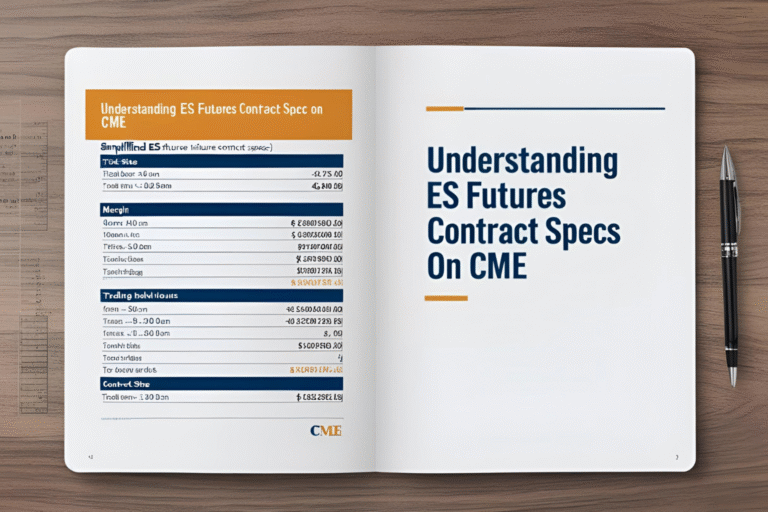Is ES the Same as the S&P 500?
At first glance, ES and the S&P 500 might seem like the same thing—they move together, track the same companies, and often appear side-by-side on trading platforms. However, ES is not the same as the S&P 500 index, and it’s important for traders to understand the distinction.
What Is the S&P 500?
The S&P 500 is a stock market index that tracks the performance of 500 large-cap U.S. companies, representing about 80% of the U.S. equity market by capitalization. It is a cash index, not directly tradable.
What Is ES?
ES refers to the E-mini S&P 500 futures contract traded on the CME (Chicago Mercantile Exchange). It’s a derivative instrument that allows traders to speculate on or hedge against future movements of the S&P 500 index.
- Ticker symbol: ES
- Exchange: CME Globex
- Contract size: $50 × S&P 500 index level
- Type: Futures contract (derivative)
- Settlement: Cash-settled
Key Differences Between ES and the S&P 500
| Feature | S&P 500 Index | ES Futures Contract |
|---|---|---|
| Type | Cash index | Derivative (futures) |
| Tradable? | No (indirectly via ETFs) | Yes |
| Symbol | SPX | ES |
| Contract Value | N/A | $50 × index level |
| Trading Hours | 9:30 AM – 4:00 PM ET | Nearly 24 hours (CME Globex) |
| Leverage | None | Yes (via margin) |
| Settlement | N/A | Cash-settled |
How Are ES and S&P 500 Related?
- The ES futures contract tracks the S&P 500 index
- Prices are almost identical but may differ slightly due to:
- Interest rate adjustments
- Dividend expectations
- Time to contract expiration
- The ES contract is often used to predict or lead S&P 500 movements during pre-market or after-hours sessions
Why Trade ES Instead of S&P 500?
- Extended hours: Trade when the stock market is closed
- Leverage: Control a large position with less capital
- Hedging: Institutions hedge large portfolios using ES
- Liquidity: One of the most liquid futures contracts globally
Related Instruments
- SPX: Cash-settled index options (CBOE)
- SPY: ETF that tracks the S&P 500
- MES: Micro E-mini S&P 500 futures (1/10th of ES)
FAQs
Q1. Why do ES and S&P 500 prices differ slightly?
Due to factors like dividends, interest rates, and futures time value.
Q2. Can I trade the S&P 500 directly?
Not exactly. You can use ETFs (like SPY) or futures (like ES) to gain exposure.
Q3. Is ES better than SPY for short-term trading?
ES offers more leverage and trades nearly 24 hours, making it ideal for active traders.
Q4. Are ES futures more risky?
Yes. Futures involve leverage, which amplifies both profits and losses.
Q5. Do institutional traders use ES?
Yes. ES is widely used by hedge funds and institutional traders for hedging and speculation.


